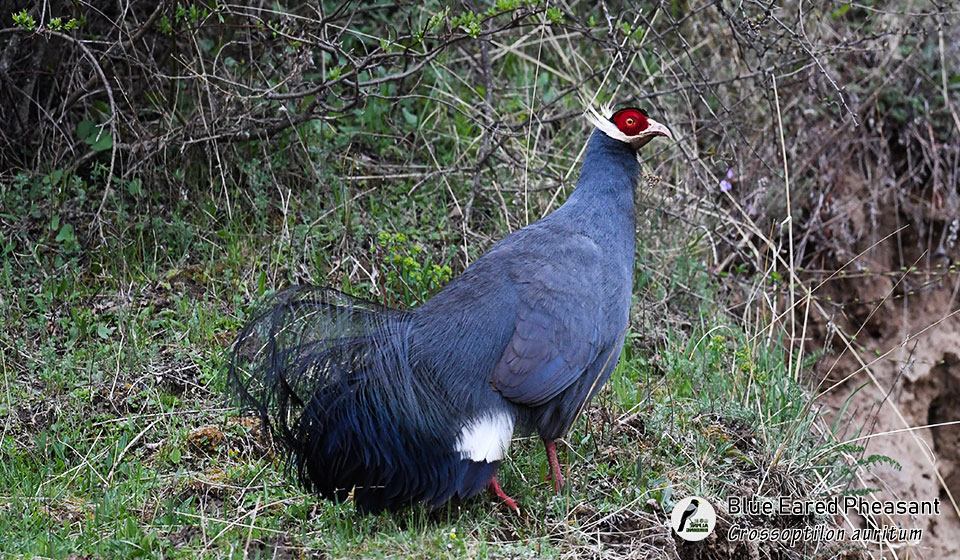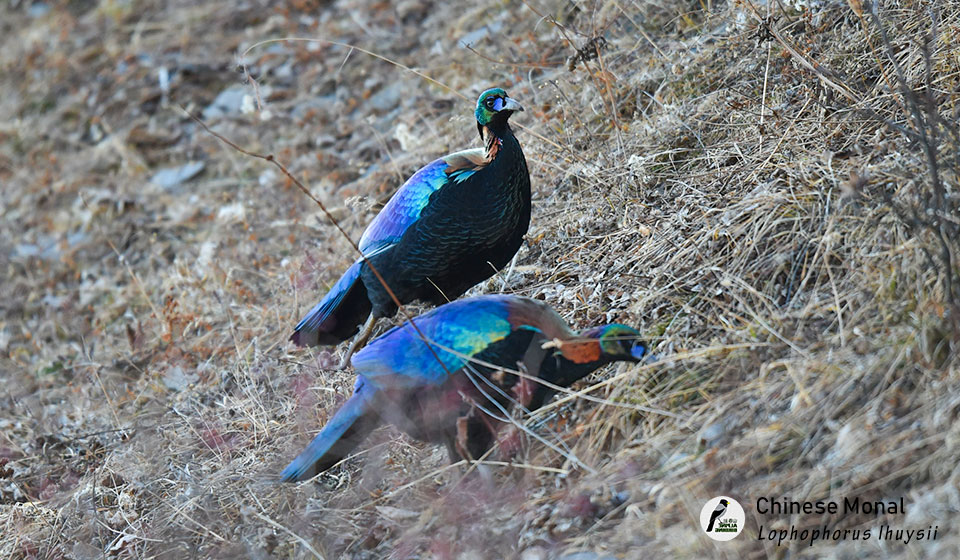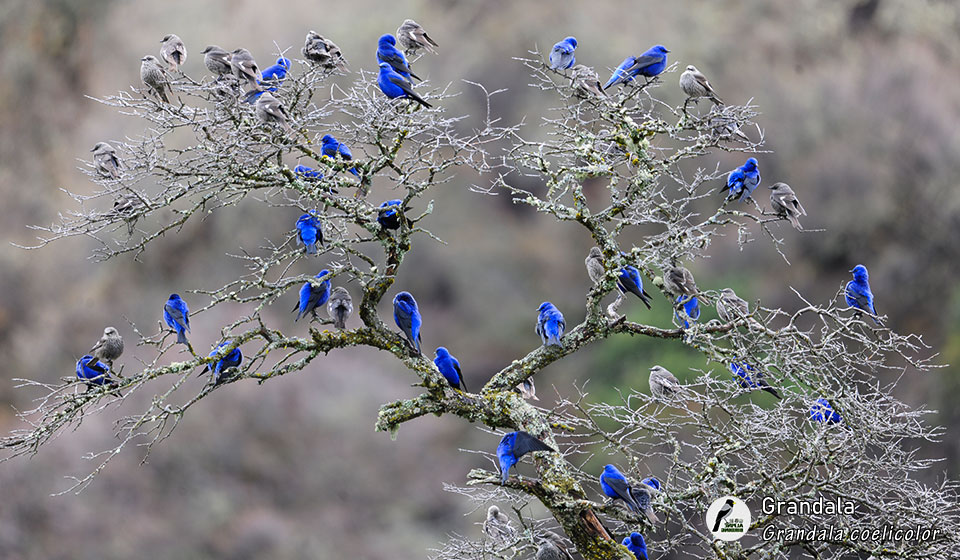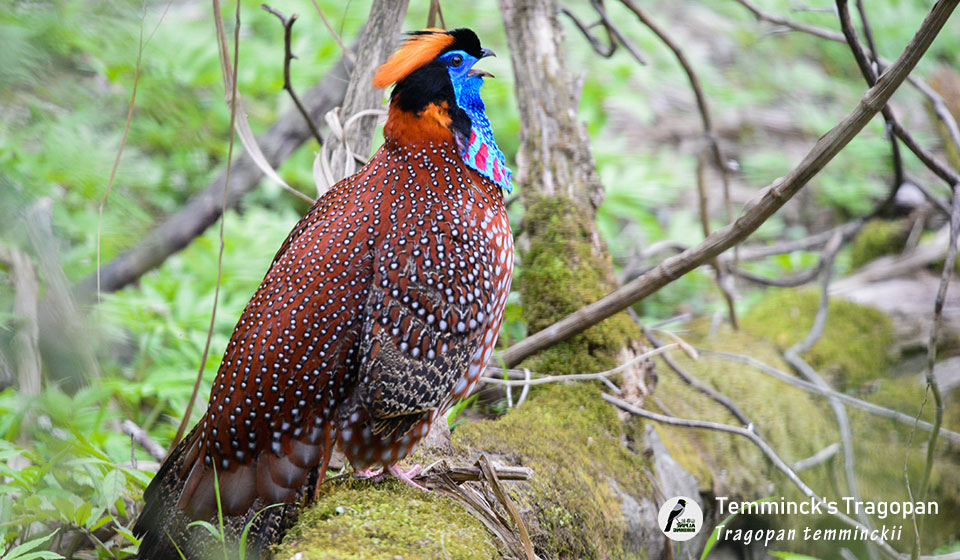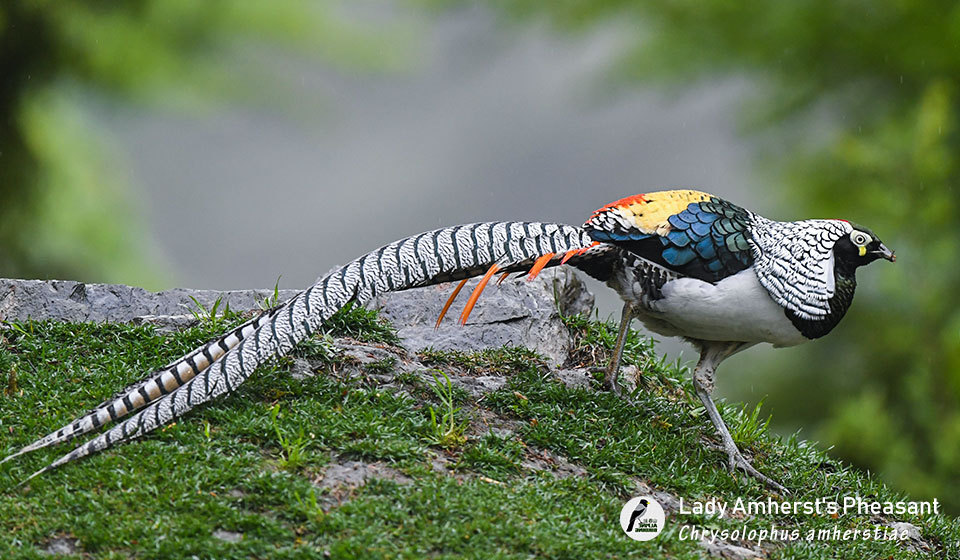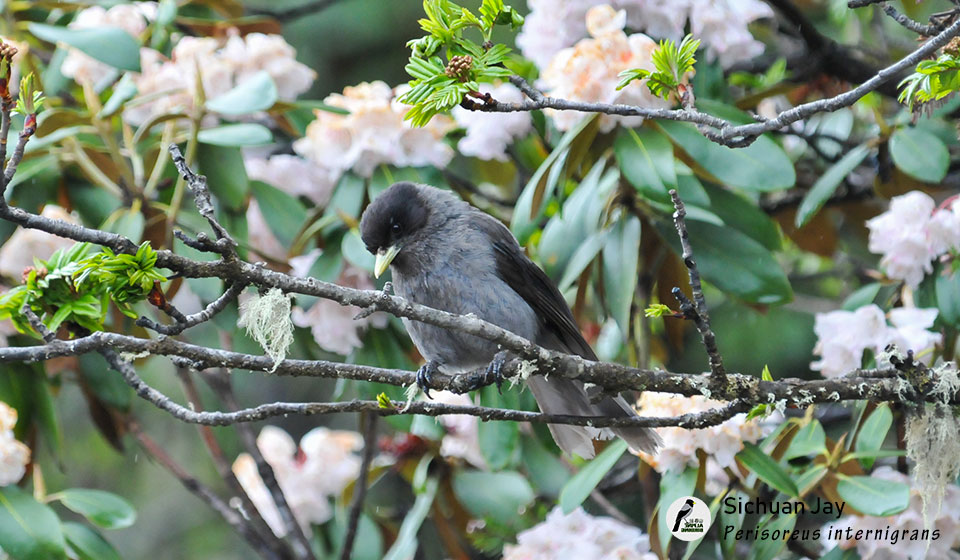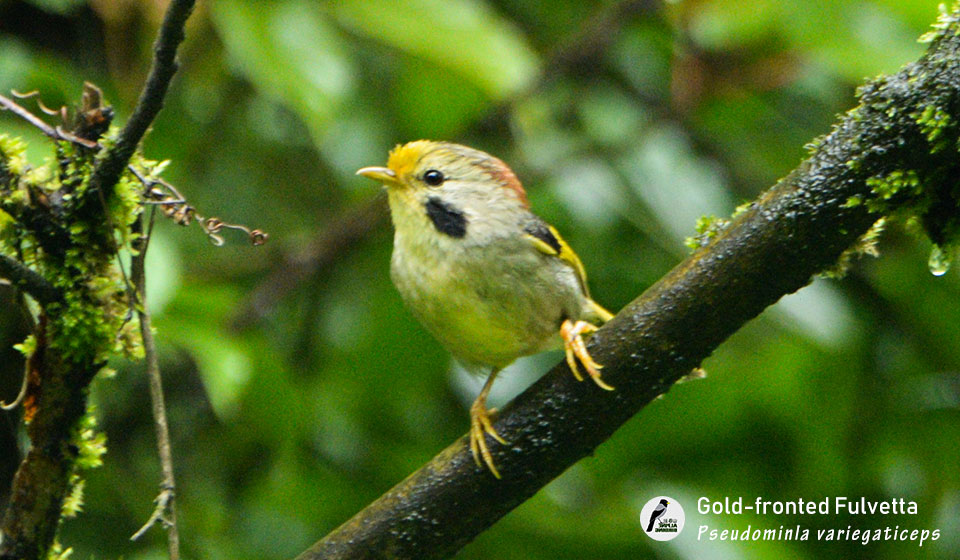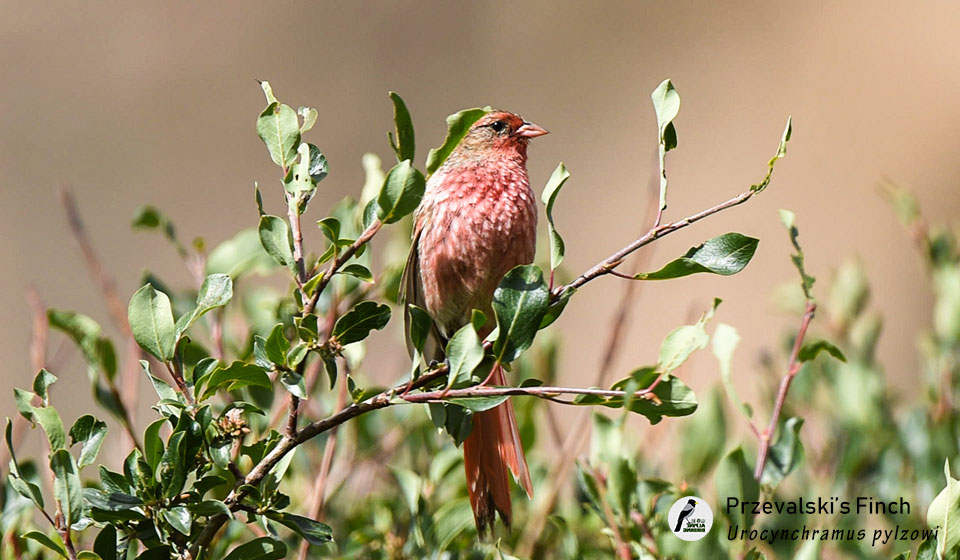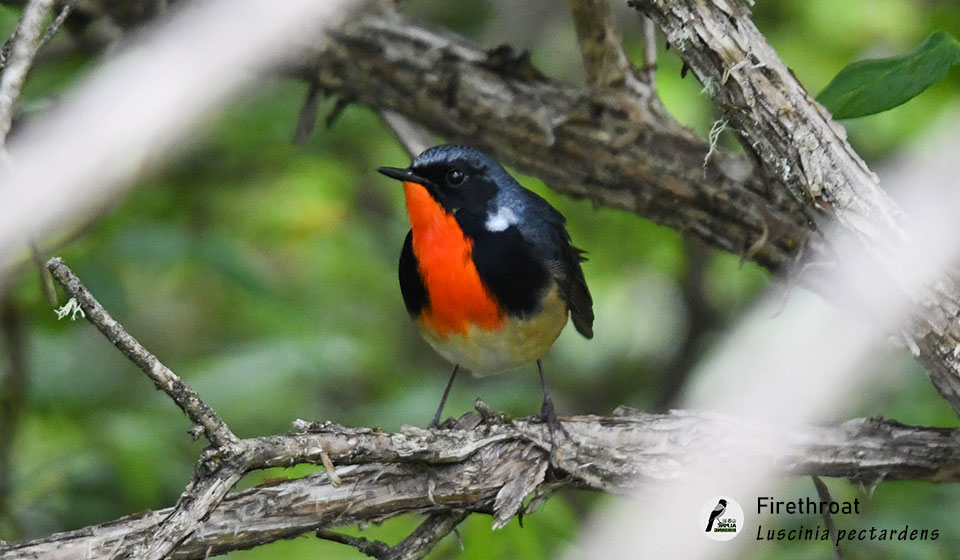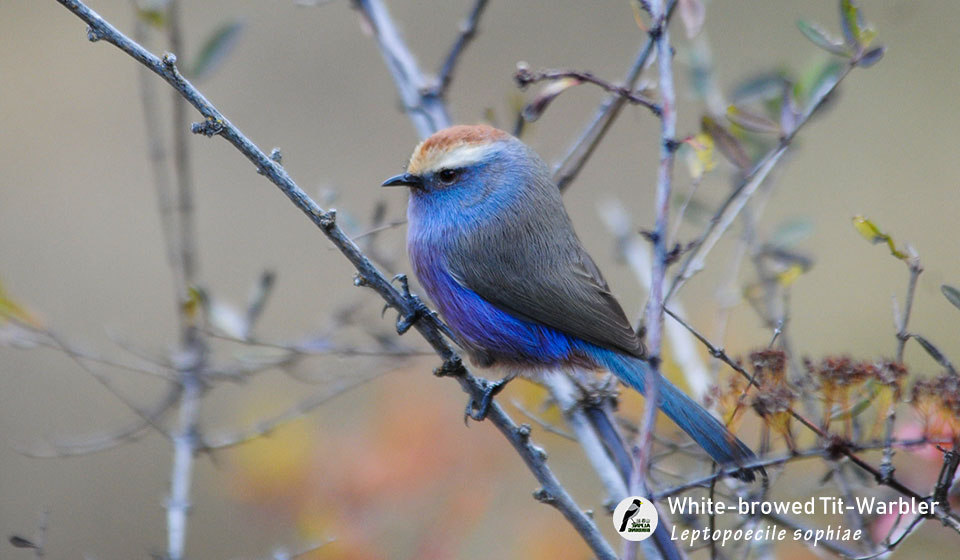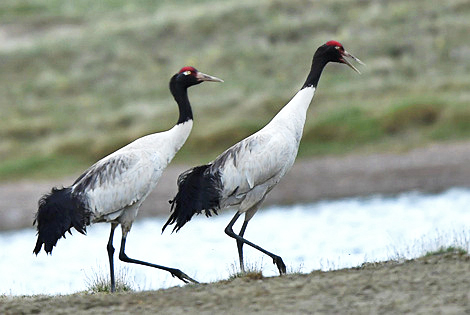By concentrating on China's endemics, this 20-day birding trip is absolutely an ultimate chance for endemics and many range-restricted species in China. Though some part of this trip is a little strenuous due to climbing or walking in high-elevation areas, we will be rewarded by not only the rare bird species but also some extraordinary mammals such as Red Panda, Golden Snub-nosed Monkey, Tibetan Fox, Hog Badger, Takin, Tibetan Macaque, Reeves's Muntjac, Chinese Goral, Tufted Deer, Sambar, etc., in addition to beautiful scenery and rich ethnic minority culture.
Tour Info Sheet
| Highlight Birds | Snow Partridge, Temminck's Tragopan, Golden Pheasant, Tibetan Snowcock, Chestnut-throated Partridge, Chinese Monal, Chinese Grouse, Blue Eared Pheasant, Blood Pheasant, Lady Amherst's Pheasant, White Eared Pheasant, Grandala, Chinese Rubythroat, Firethroat, Sichuan Jay, Sichuan Wood Owl, Black-necked Crane, Vinous-throated Parrotbill, Brown Parrotbill, Fulvous Parrotbill, Ashy-throated Parrotbill, Great Parrotbill, Three-toed Parrotbill, Grey-hooded Parrotbill, Golden Parrotbill, Przevalski's Pinktail, Collared Grosbeak, White-winged Grosbeak, Goldcrest, Snowy-cheeked Laughingthrush, Giant Laughingthrush, Elliot's Laughingthrush, Slaty Bunting, Crested Tit Warbler, White-browed Tit Warbler, Chinese Fulvetta, Sichuan Tit, White-browed Tit, Wall Creeper, Lammergeier (Bearded Vulture), Red-billed Chough, Yellow-billed Chough, Long-tailed Rosefinch, Common Rosefinch, Chinese Beautiful Rosefinch, Chinese White-browed Rosefinch, Pink-rumped Rosefinch, Dark-breasted Rosefinch, Crimson-browed Finch, Red-fronted Rosefinch, etc. |
|---|---|
| Numbers of Species to Expect | 250-300 |
| Ease of Birding | mostly easy with a few tricky species |
| Highlight Mammals | Red Panda, Golden Snub-nosed Monkey, Tibetan Gazelle, Tibetan Fox, Wolf, Leopard Cat, Hog Badger, Takin, Tibetan Macaque, Reeves's Muntjac, Chinese Goral, Tufted Deer, Sambar, Masked Palm Civet, etc. |
| Other Attractions | Tibetan culture, wild panda habitat, delicate food |
| Photography Opportunities | birding focused but with very good photography chances |
| Habitats Covered | subtropical forests, woodlands, grasslands, snow mountains, wetlands |
| Expected Climate | mostly comfortable, windy and cold on the plateau, humid in the basin, rain is possible |
| Physical Requirements | mostly easy, demanding but optional in certain parts |
| Accommodation | very comfortable |
| Transportation | 19-seat van |
What makes this trip irreplaceable?
Dates & Prices
| Dates | Booking Status | Price | Single Supplement | Group Size | Guides |
|---|---|---|---|---|---|
| Jun 14 - Jul 3, 2025 | Space Available | 5,350USD/pax | 630USD/pax | 6-8 | Local Guide |
Itinerary
Tour Map
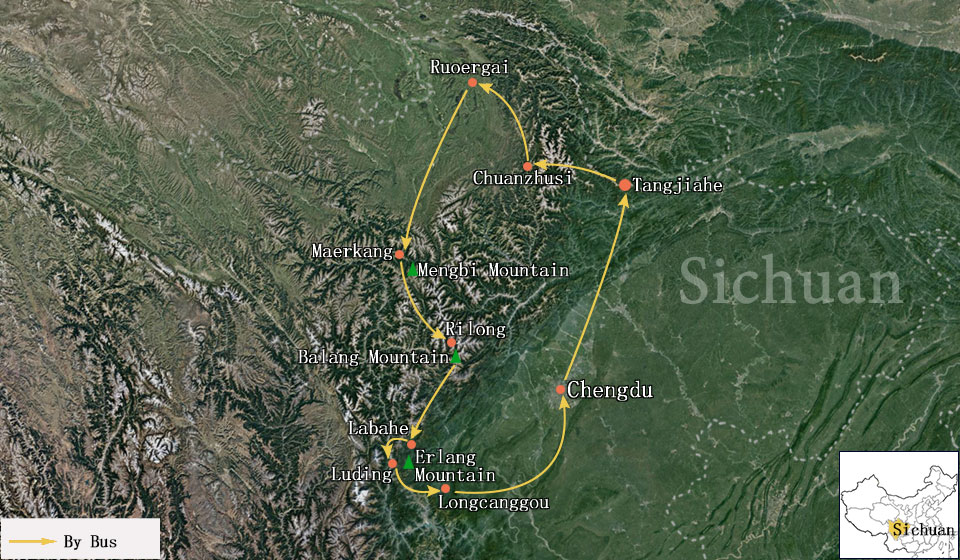
Birding at low elevation looking Gold-fronted Fulvetta, Golden-breasted Fulvetta, Golden Parrotbill, White-backed Woodpecker, Darjeeling Woodpecker, etc. After that, we will drive on to Wawu Mountain. Start birding upon arrival.
Wawu Mountain is not just a popular tourist site, it is by far an unmissable birding spot to look for parrotbills, fulvettas, laughingthrushes, and babblers in China. Besides, it is by now the best place to search for Red Panda in the wild. We will spend two days here searching for the highlight birds like Lady Amherst’s Pheasant, Temminck’s Tragopan, Emei Shan Liocichla, Golden-fronted Fulvetta, Golden-breasted Fulvetta, Ashy-throated Parrotbill, Grey-hooded Parrotbill, Gold Parrotbill, Great Parrotbill, Three-toed Parrotbill, Red-winged Laughingthruhrush, Hwamei, Indian Blue Robin, Vinaceous Rosefinch, Red Crossbill, Slaty Bunting, etc.
Day 19: Wawu Mounrain to Chengdu.
Guide(s)
We will arrange one of our best local guides for this trip who has rich experience of guiding tours in this region. The following are some of our best local guides in and around this area.
Philip He
Bella Zhang
Bella, the director of AlpineBirding, graduated from Sichuan Agricultural University with a Bachelor's Degree. She joined AlpineBirding in early 2016 and became the director of AlpineBirding in 2018. She was born and grew up in a Bai ethnic family in Yunnan Province which boasts of the largest number of bird species in China. Her interests toward birds started with her observation of a Long-tailed Minivet in her mom's garden at a very young age. As she grows up, the interests and love toward birds become stronger and stronger. Because of that, she found AlpineBirding before graduation and joined the company for further learning of birds. Bella has guided a number of birding trips in cooperation with AlpineBirding guide in the past years, her passion, readiness to help and detail-oriented attitude have won her lots of praise from our clients.
Reports
Testimonials
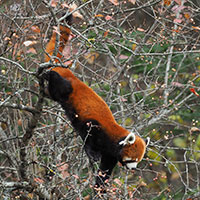
-
Wonderful Birding trip with AlpineBirding
On November 2019 we had an amazing birding trip to Sichuan area with AlpineBirding.
We went for 6 days to Wolong, Longcanggou and Labahe, and thanks to Shay, our guide, we manage to see many beautiful birds in an incredible scenery.
One of the highlights were 4 different Red Pandas that gave us amazing view!!!
You can't go wrong with AlpineBirding and I can highly recommend to travel in Sichuan and china with them, and I hope to do that again myself.
Yohay Wasserlauf / Western Sichuan October 13, 2019
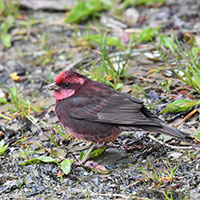
-
The Birds of Balang Shan
My husband and I are just returned from an amazing and very professional Birding Tour by Alpine Birding in the Wolong Preserve/Balang Shan area; Western Sichuan Province. Gorgeous forests and alpine landscapes, the dividing line between the Sichuan Basin and the Qinghai Plateau. Awe-inspiring views!
We had a 1 1/2 day experience, all inclusive with a private driver (to and from and during the location), delicious meals and snacks and water provided, a room for the overnight stay, and our extraordinary Birding Guide Shay who showed and instructed us on far more birds than we could've hoped to see had we been on our own! He generously shared his superior equipment and bird identification field guide, and went above and beyond our expectations in stopping at many many locations to look for birds! We were impressed by his knowledge of bird identification and his deftness of scoping! Attention to detail was one of the hallmarks of our experience; We felt very well taken care of:)
While our trip was of necessity a simple overnight/daytrip, I highly recommend a longer excursion; We will definitely do another AlpineBirding tour in the future:)
Alice and Silas / Balang Mountain Excursion May 25, 2019
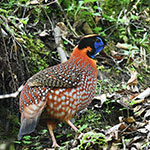
-
Balang Mountain / Chongqing
I contacted Alpine Birding last minute and they did an amazing job to set up 2 brilliant birding trips for me.
One around Chongqing city and one from Chengdu to Balang Mountain. I cannot fault them. Everything was brilliantly organised and the local knowledge of bird calls and many hidden birding spots was excellent.
I highly recommend this birding team.
Andrew / Balang Mountain & Chongqing July 17, 2018
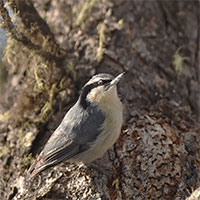
-
Several Very Good Weekend Trips in Sichuan and Yunnan
My wife and I are serious birders from the US. During 2018, we lived in Thailand for a work assignment, and had the opportunity to do several weekend trips up to China to go birding with Alpine.We had successful and memorable outings in Zixishan (Yunnan), as well as Balangshan and Longcanggou (Sichuan), picking up specialties such as Alpine Accentor, Lammergeier, Black-headed Mountain-Finch, Blood Pheasant, Dark-breasted Rosefinch, Elliot's Laughingthrush, Giant Laughingthrush, Golden Pheasant, Koklass Pheasant, Snow Partridge, Snow Pigeon, Tibetan Snowcock, Verreaux's Partridge, White Eared-Pheasant, White-capped Redstart, Chinese Bamboo-Partridge, Golden-breasted Fulvetta, Gray-faced Liocichla, Lady Amherst's Pheasant, Red-tailed Laughingthrush, Temminck's Tragopan, Bar-tailed Treecreeper, Godlewski's Bunting, and Yunnan Nuthatch, in addition to many others.Even without the birds, Balangshan has the most inspiring mountain vistas we've ever seen.Bella and her team arranged for comfortable transportation, lodging, and very experienced guides. But the best additional benefit was the food - our guides always took us out for the best local lunches and dinners - it will be very difficult to return home and have Sichuan food now, knowing how it pales in comparison to the real Chinese food in China...Bella and Alpine were also very responsive and attentive to our overall satisfaction, and when we suggested some things that could be improved, they were happy to accommodate us. It was much appreciated.We recommend Alpine Birding as a great way to see some of the most incredible birds found only in one of the most beautiful regions of Asia.
Claire and Michael / Southwest China (Sichuan & Yunnan) May 29, 2018
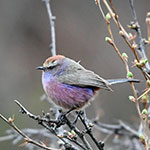
-
Birding in Sichuan
Arrange a birding / hiking trip in northwestern Sichuan. Our guide Parus Yang was a good guide with excellent ornithology knowledge. We saw despite not the best season lots of birds and mammals.
Accomodation which was arranged was fine.
Mathieu W / Northwest Sichuan June 19, 2015
